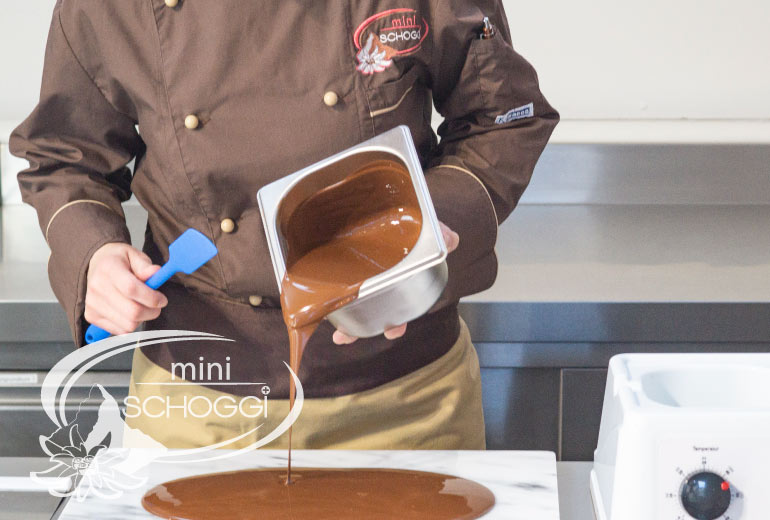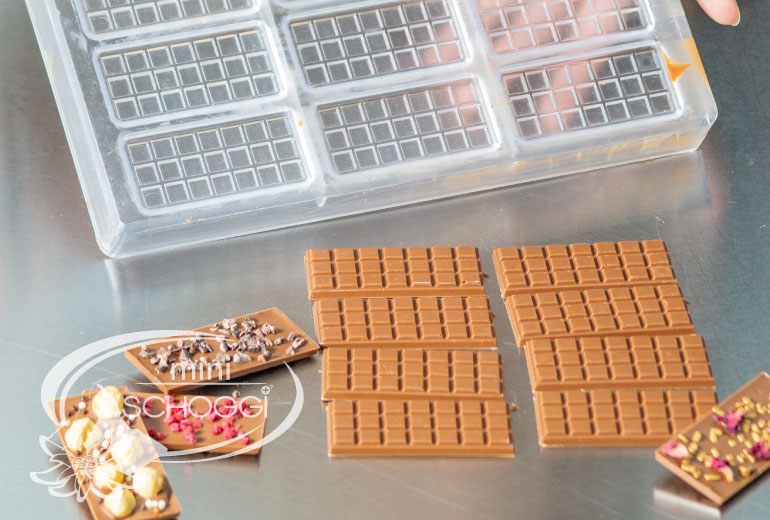...
Blog categories
- Sweet recipes (95) click
- Salty recipes (8) click
- Cooking (27) click
- Seasonal recipe ideas (64) click
- Things to know (21) click

The beautiful sheen of the products made from couverture is of utmost importance and gives the final product its appetising appearance. The products produced legally obtain this gloss when the couverture or chocolate has been correctly tempered. The complex cocoa butter is responsible for the appearance and thus also for the gloss. It is polymorphic and contains different fat groups (stearic, palmitic and oleic acid) with different melting points from 20 ºC to 47 ºC.

These different fats have the property of solidifying into unstable and stable crystal forms when they cool down. The fat components contained in cocoa butter thus consist of "stable" as well as "unstable" fat crystals. Since all couvertures contain cocoa butter, it is imperative that it is tempered in order to avoid affecting the consistency or aesthetics. Tempering couverture / chocolate means processing the fat components of the cocoa butter in such a way that it is easier to shape and obtains the desired gloss and break after processing (whether as bars, pralines or hollow figures). Tempering works best for inexperienced people with the inoculation method, where 2/3 of the couverture is melted and then inoculated with 1/3 of fresh couverture drops. This process creates the perfect balance between stable and unstable fat crystals. You can read more about this HERE.
If you don't do this, the couverture can stick to the praline, bar or figurine moulds or take on a greyish appearance. Although this is not as visually appealing, it is harmless for the enjoyment.
So you could say that if there were no cocoa butter in a chocolate or couverture, this would naturally simplify a lot of things because the couverture would not have to be tempered. This is exactly what was done with cake icing (also called fat icing or cake melts). Cake icing is a chocolate-like mass that does not need to be tempered, but is still shiny. In cake icing, the complex cocoa butter is replaced by coconut, palm or other vegetable fats. These fats provide a nice flowing property as well as a beautiful shine to the final product. The cake glaze saves a lot of time, as the tempering itself takes some time. The disadvantage of cake icing, however, is that it is not as tasty as chocolate or couverture. Cake glaze should therefore never be used for high-quality confectionery products such as pralines or chocolate bars. The fat icing is only suitable for icing cakes, confectionery or for decorating biscuits and biscuits.
In general, chocolate as well as couverture and cake icing should always be stored in a dark, cool and dry place.
The shelf life varies depending on the type. As a rule, white chocolate | couverture has the shortest shelf life at 6 months, then comes with milk up to 1 to 1 1/2 years and dark with up to 2 years.
 Casting your own chocolate Easter bunnies
Casting your own chocolate Easter bunnies
 Make your own decor roulade
Make your own decor roulade
 Correctly temper couverture and chocolate
Correctly temper couverture and chocolate
 Cake Recipes Convert
Cake Recipes Convert
 Casting Father Christmas from chocolate
Casting Father Christmas from chocolate
Leave a comment